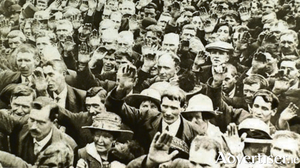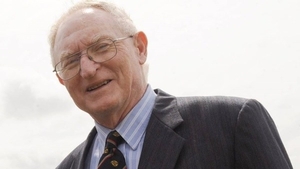Search Results for 'County Hospital'
5 results found.
Lack of social distancing aided second phase of ‘Spanish Flu’

[Week II. Read Part I.] The 1918 General Election on December 14 was the most significant election in modern Irish history. Following the events of World War I, the Easter Rising, and the Conscription Crisis, the whole island was caught up in fierce debate as to its future. The result was a sweeping victory for a radical Sinn Féin, which promised to establish an independent Irish Republic. The moderate Irish Parliamentary Party, which had dominated the Irish political landscape since the 1880s, was wiped out; while in Ulster the Unionist Party took power.
Flying Doctor's medals to come home to Mayo

The family of the late Dr Pádraig Carney, the legendary Mayo footballer, is to provide all his medals, some photographs, and other memorabilia, for permanent display in Mayo.
Mayo through Jack Leonard’s lense

'The Men of the West', that iconic photograph of Michael Kilroy's flying column taken with only the aid of natural light on the southern slopes of Nephin at 11.45pm on the longest day of the year in 1921, is known to us all. It hangs in numerous Mayo pubs and homes and thanks to the quality of the conditions and the skill of the photographer, we can clearly see the resolute expressions of the young men, we know their names and know their stories. But what of the photographer himself? What of the man who captured this first ever photo of an IRA unit on active service in Ireland? Jack Leonard did not just happen upon Kilroy and his men that bright June night. He was no amateur photographer, and neither was he a bystander during his country's fight for freedom. With a keen sense of duty, Leonard used his talent to capture all aspects of Mayo life in the early twentieth century. Jack 'JJ' Leonard was born in 1882 in Crossmolina and as a young man he trained in journalism and photography in London. He returned to Ireland in 1906 to set up his photography business at a time when the country was in political flux. Emotions and anger remained after the Land War in Mayo, a period of civil unrest and violence in the late 1800s, and the methods of parliamentary nationalists were now being challenged by physical force republicans.
Mayo through Jack Leonard’s lens

'The Men of the West', that iconic photograph of Michael Kilroy's flying column taken with only the aid of natural light on the southern slopes of Nephin at 11.45pm on the longest day of the year in 1921, is known to us all. It hangs in numerous Mayo pubs and homes and thanks to the quality of the conditions and the skill of the photographer, we can clearly see the resolute expressions of the young men, we know their names and know their stories. But what of the photographer himself? What of the man who captured this first ever photo of an IRA unit on active service in Ireland? Jack Leonard did not just happen upon Kilroy and his men that bright June night. He was no amateur photographer, and neither was he a bystander during his country's fight for freedom. With a keen sense of duty, Leonard used his talent to capture all aspects of Mayo life in the early twentieth century. Jack 'JJ' Leonard was born in 1882 in Crossmolina and as a young man he trained in journalism and photography in London. He returned to Ireland in 1906 to set up his photography business at a time when the country was in political flux. Emotions and anger remained after the Land War in Mayo, a period of civil unrest and violence in the late 1800s, and the methods of parliamentary nationalists were now being challenged by physical force republicans.
Mayo co-operative creameries, the original cash cow
Irish farmers learned a long time ago that, in certain circumstances, working in co-operation could lead to real progress and maximised profit for each individual. The meitheal system, whereby a farmer would assist a neighbouring farmer, who would in turn reciprocate that help when needed, was a well established tradition in rural Ireland. The spirit of the meitheal was evident in the beginnings of the Irish co-operative movement. Co-operatives were operating since the 1880s and the concept of voluntary association among farmers went through strong periods as well as years of slow development.

